Ericsson learning and business leaders have been laser focused in recent years—on new ways of upskilling employees in AI and other business-critical capabilities, so they can out-learn and outperform.
The idea? Put skills first, and make Ericsson a skills-based organization that puts skills to work. The strategy? Approach learning in ways that are no longer programmatic but instead systematic—to maximize potential, improve outcomes, and excel at adapting to change.
An impressive Ericsson success metric reveals the power of this path: Five years ago, the telecom giant began upskilling a relatively small group of 300 scientists to use artificial intelligence. Now, more than 30,000 of the company’s 100,000-plus employees are considered very proficient in AI.
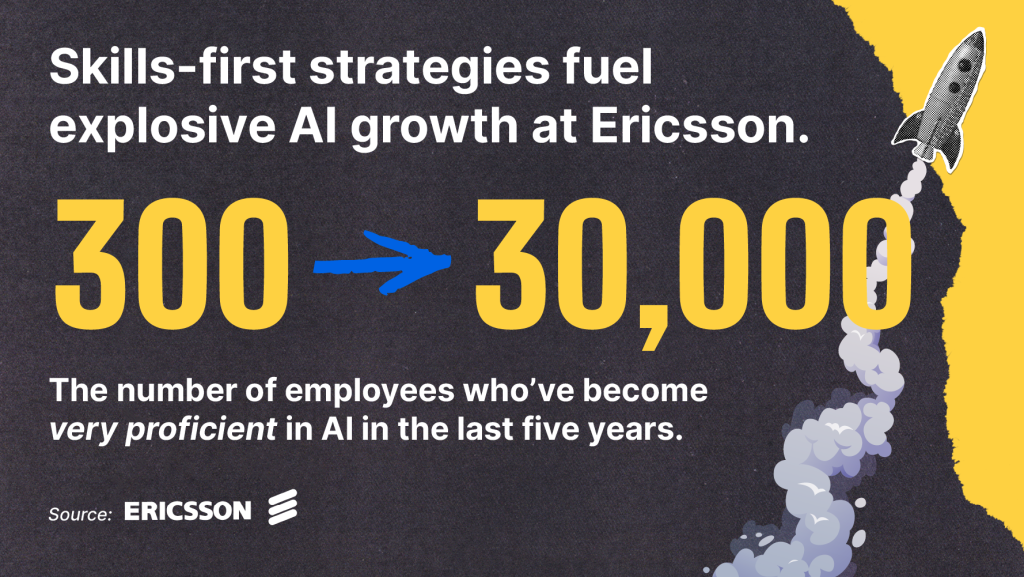
Skills First: Advancing with Purpose
The next time you use your cell phone, there’s an outsized chance the data you send and receive will be traveling on an Ericsson network—but it wasn’t always this way.
A leader in 5G technology, the Stockholm-based company’s infrastructure, software, and services span the globe. The company’s origins are more humble, however, dating to its founding as a telegraph repair shop in the 1800s.
“We’ve been reskilling, reimagining, and reinventing for a very long time,” said Vidya Krishnan, Chief Learning Officer and Global Head of Learning & Development. “We’re 148 years old. . . We refuse to act our age.”
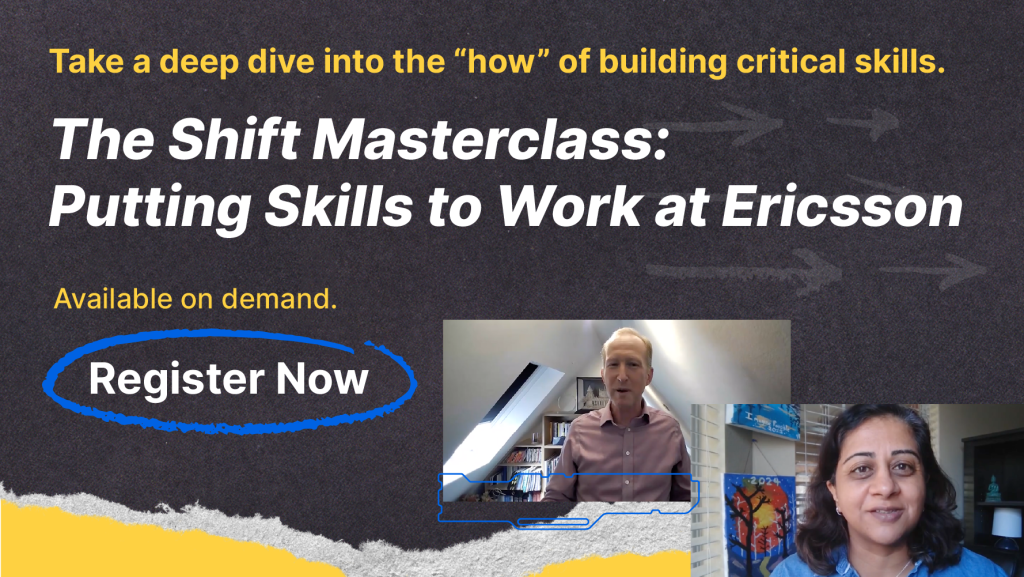
Skills First: A Journey with Two Key Goals
The skills-first journey at Ericsson has been unfolding in two parts. In part one, Krishnan said, “we want to build skills, build future-critical skills, and we want to do that systematically company-wide, which means we have to sense what skills matter, and we have to connect skills to [business] strategy, and we have got to make sure … that we build future critical skills with speed, with scale, and with accountability.
“Part two is putting skills to work. We need to be equally systematic, equally reliable, and even more inclusive than we’ve ever been about putting skills to work in high impact areas, in growth areas, by being skills-based increasingly across all of our people practices.
“If there’s one thing we know for sure, it’s that the people we have must continually become the people we need,” Krishnan said. “The companies that are going to outperform other companies will do so by out-learning them and being able to put the right people with the right skills in the right places at the right time, again and again and again.”
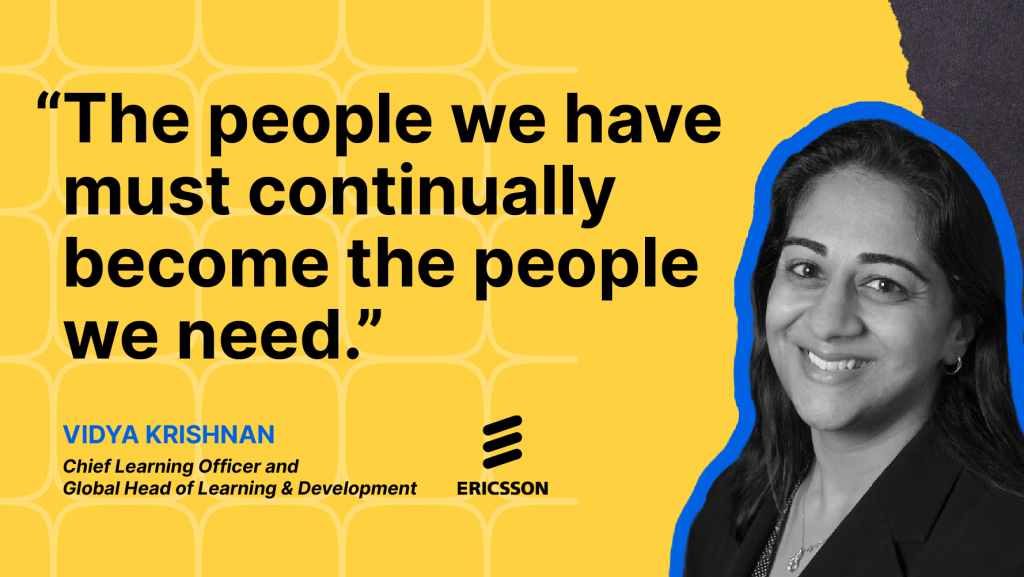
Readying the Foundation: Efficiencies & Infrastructure
To put skills to work, Ericsson has been creating an environment in which skills-first strategies can thrive. The effort dates to 2019, and Degreed has been a key partner, especially helping the organization to pinpoint the skills it needs, to personalize development, and to measure change.
Internal skill and job architecture frameworks had become stagnant. In some cases, job profiles hadn’t been updated since 2013, fueled by inefficiencies in workforce planning and skill assessment. This led to a lack of career transparency. Employees faced uncertainties about career progressions and lacked clear visibility into the skills required for future roles.
“When people wanted to think about, ‘Well, what do I do next?’, it wasn’t clear,” said Peter Sheppard, Head of the Ericsson Global L&D Ecosystem, describing missteps. “We’d spend a lot of time assessing people, understanding people, and then we threw away the receipts.”
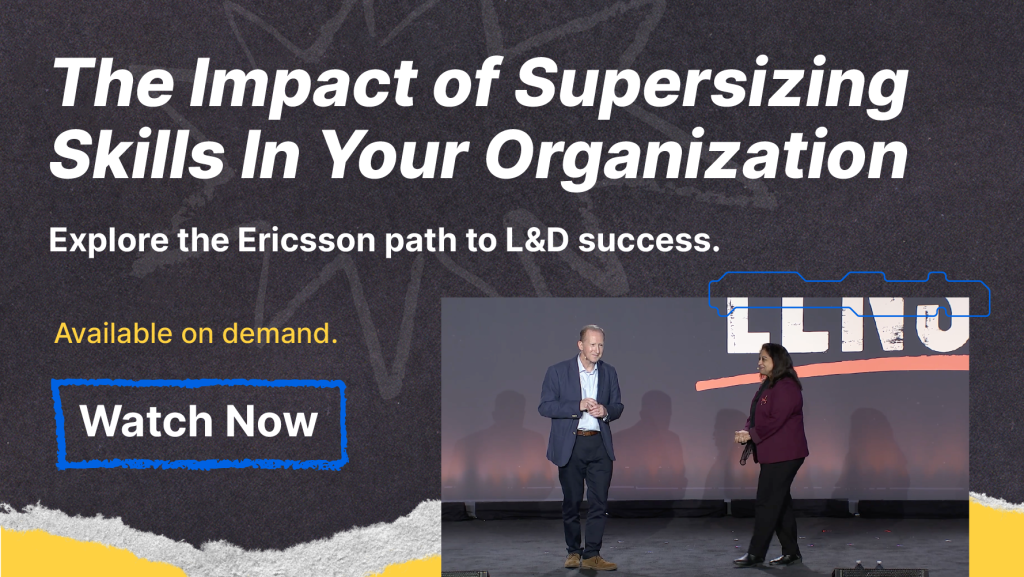
Tactical needs overshadowed strategic workforce planning, limiting the company’s agility. Key processes weren’t automated or optimized.
“We hadn’t updated our old competencies catalog for three or four years. We needed it to be more automated,” Sheppard said. “Do that, and we deliver more value.”
Making Change
Ericsson introduced a new digital job architecture and integrated skills deep into job profiles, aligning them with a new and dynamic skill taxonomy. In doing so, leadership embraced automation whenever possible and, moreover, generated momentum for a skills-based approach to business.
The company moved from ad-hoc training programs to a systematic approach of identifying and developing critical skills aligned with strategic business objectives. This included defining a set of global critical skills—a vital few—essential for the company’s future, irrespective of job roles or functional areas.
New approaches to governance made room for change in the flow of work. For example, business units were empowered to enhance job profiles as needed without waiting for HR.
A pivotal shift came when Ericsson embraced a skills-based approach to people practices—from recruitment to learning and development and more.
This included:
- Integrating skills into job advertisements.
- Creating a talent marketplace called Career Hub based on skill matching.
- Enhancing career mobility through project-based learning initiatives.
It all added up to a dynamic, skills-first ecosystem. And through it all, data collection and sharing were prioritized.
The company now has data that acts like a window, providing leadership with a clear and useful view of the organization’s skills supply and demand. It also helps L&D to regularly update leaders and employees on what is happening with skills across the organization.
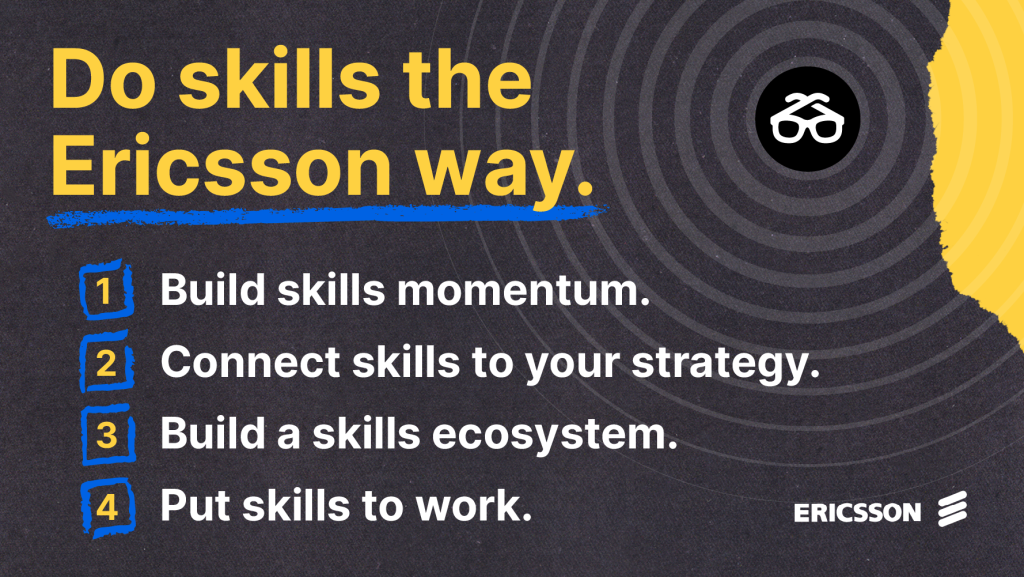
Putting Skills to Work—and the Good Reasons Why
Putting a skills infrastructure to work drives several benefits—including higher employee retention and more inclusion, Sheppard said, adding the number one reason people leave Ericsson is a lack of personal growth.
“Secondly, it helps with what I call visible simplicity,” Sheppard said, describing a dynamic in which employees can easily see all the same skills across talent and learning platforms from a talent marketplace to Degreed.
Third, embracing skills enables an organization to pivot, Sheppard said. “If you don’t have dynamic skills, then how can you pivot quickly as a company?”
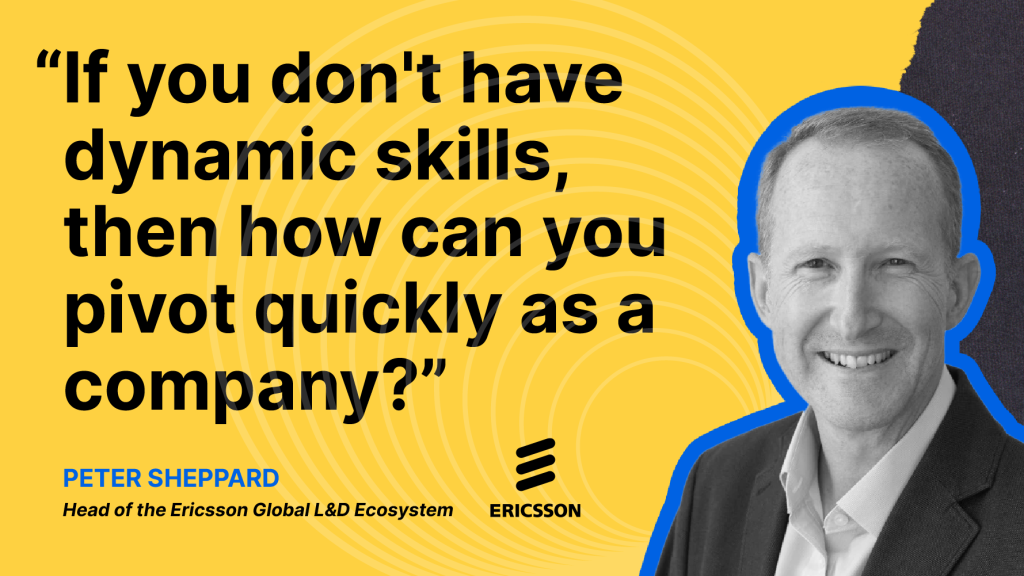
Putting Skills to Work—Grow, Match, & Deploy
Ultimately, putting skills to work at Ericsson was about more than creating a skills-based infrastructure.
“It’s about solving pragmatic problems,” Sheppard said. “It’s about putting it to work in different processes for the value of Ericsson and for the value of yourself as an employee.”
With a system like the Career Hub talent marketplace, Ericsson is able to put skills to work by matching and deploying critical skills into strategic areas.
“We want to enable people to fulfill their ambitions and fulfill their growth through our Career Hub, by ensuring that we match people to project opportunities, to job opportunities, and so on.
“This is the fundamental element of making all this practical,” Sheppard said. “It comes down to matching technology. Can you match the skills needed—that are defined in those job roles, that are defined for your business—with the skills that I have as an individual?”
Maximizing, Improving, & Adapting
Systemic skill building through massive targeted upskilling positions Ericsson to maximize employees’ potential. The company is improving outcomes by aligning career mobility with skills development while boosting employee engagement, retention, and satisfaction. Likewise, Ericsson is adapting to change—responding to new business needs and market trends—by enhancing agility and increasing efficiencies.
By putting skills to work using data-driven insights, Ericsson future-proofs its workforce, clearing a path for continuous innovation and sustainable growth.
At Degreed, we’re reminded that—in a world where change is constant—the future indeed belongs to organizations willing to embrace the power of putting skills to work.
“We all know 5G is not the last G, right?” Krishnan said. “Technology is inherently upgradable, and so are we. And we’re proud to say that we have this sacred duty to get our 105,000 employees in 180 countries to change themselves, their skill sets, and their mindsets, because we know that we’re creating connections that can make the unimaginable possible.”
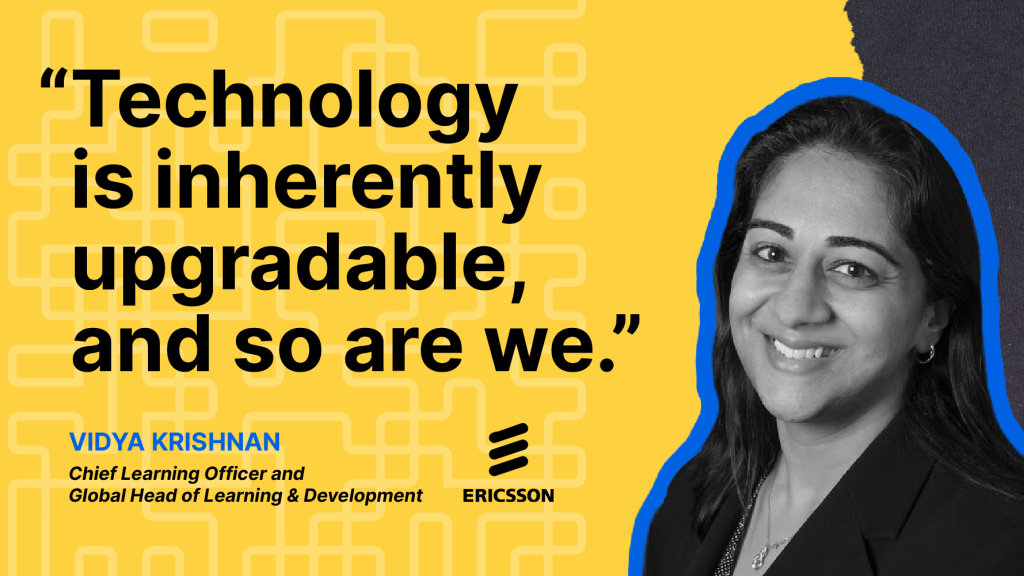
Take the next step.
Let’s talk about skills at your organization. Request a Degreed demo today.

